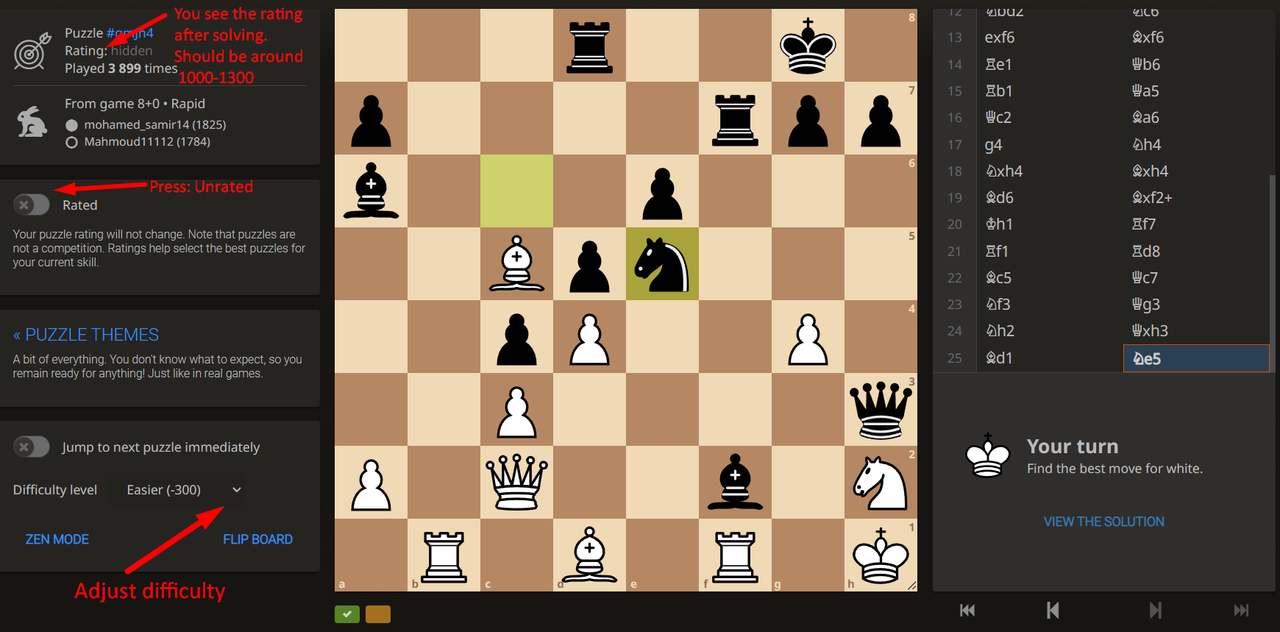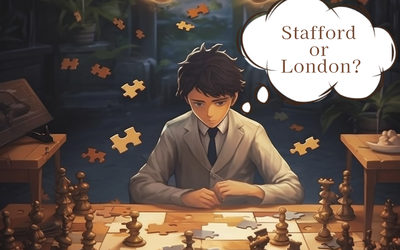
Beginner's Guide
Learn why solving puzzles unrated can speed up your growth as a beginner.The term "beginner" often covers a broad spectrum of skill levels. My aim with this article is to provide clear steps for players whose rating is around 1500 or lower on Lichess. You will get to know about a new approach to solving puzzles, an algorithm for decision-making, and the most suitable openings. As a coach with experience working with players at all levels, I can confidently state that the approach I outline here is highly effective.
Let's consider our priorities together. As a beginner, randomly selecting topics may be overwhelming and confusing. It's important to establish a clear starting point that will serve as a foundation for your future growth.
So, what is the cornerstone that we should focus on?
Most of the games on that level are decided due to massive blunders. This means that the ability to punish your opponent for big mistakes - has to be your first priority.
Opening
Before we start talking about training techniques, let's first address openings. It's important to note that each opening has its unique characteristics, and our aim is to select those that lead to an open game(!), allowing for quick and efficient development, as well as numerous tactical opportunities early in the game.
Playing openings like French, Pirc, King's Indian with black, and London or b3 with white - may not be the best choice as it does not typically lead to open positions where massive blunders are more likely to occur. Ideally, players should seek positions that allow them to practice the skills they are currently training.
So, what openings should you choose?
For white: Evans Gambit, Danish Gambit, Morra Gambit, or any other gambit that you find. With black it is much harder to play a reasonable gambit and not be completely lost after the opening. So, I suggest playing active lines such as Grunfeld, Accelerated Dragon, Four Knights Sicilian etc. However, don't try to memorize everything, just learn the basics(first 3-5 moves), and start playing them. This approach will provide you with opportunities to exercise your tactical vision. By following this advice, one side will typically gain a significant advantage within the first 7-12 moves.
Training
This is how you can improve your tactical vision:
To begin, go to topics on lichess: https://lichess.org/training/themes. Then, the first topic for you is 'Hanging Piece'. After that: 'Fork', 'Discovered Attack', and 'Pin'. These patterns are responsible for most of the blunders in chess. Once you feel confident, you can move on to solving puzzles that aren't affiliated with any specific theme: https://lichess.org/training.
Now comes the trick:
Solve them unrated(!). The rating of puzzles has to be around 1000-1300. To get such puzzles you can press either -300, or -600, depending on your current rating. But why? The idea is that you don't need puzzles to become more complex, what you need is to get comfortable with recognizing basic tactical patterns. There is a huge difference between solving simple puzzles that should require 3-5 seconds to identify the pattern(that's what you need) and calculation, which may require more than 1, 3, 5, and even 10 minutes (you DON'T need that, yet).

I recommended spending roughly 5 seconds on each simple puzzle. The daily amount should range from 150-200 puzzles, taking approximately 15-20 minutes. This exercise demands a high level of concentration and can be repeated 2-3 times a day.
That's all the training (besides playing) that you MUST do. Obviously, reading books, watching videos, etc - are also useful, but not on the same margin. Now, let's discuss playing!
Playing
If you don't have much experience, then most decisions look quite random, which means that to play the game - you need a structure. You must be conscious of the way you play.
Here is the structure that I suggest for each move:
- Scan for tactics for 5-10 seconds (you should expect to see the tactic during that time)
- Ask yourself if the opponent has a threat. (If they do, then you make a defensive move).
- If the tactic exists and you noticed a blunder:
1. Implement it and win material.
2. Start focusing on making stable moves and exchanging pieces. - If you haven't noticed a blunder:
1. Activate undeveloped pieces towards the center.
2. Start targeting the opponent's king.
The process takes time, which means that you should mostly play rapid games, at least 10+5.
Basically, this is how most of your games should look like:
- Aggressive opening (engine might hate it, but we literally don't care)
- Early castle and fast development towards the center
- Creating threats
- Noticing blunders and winning material
- Exchanging similar pieces
- Grabbing the rest of material
- Checkmate (yay!)
Conclusion
Some may argue that I'm oversimplifying our beloved complicated game... However, I believe that it is crucial for beginners to avoid becoming overwhelmed by the wide range of topics. It is important to strive for clarity and simplicity in order to take the first steps successfully.
- Start building an opening repertoire (you need to have clarity for the first 3-5 moves against the most common replies: 1...e5, Sicilian for White, and 1.e4 1.d4 for Black).
- Limit massive blunders and develop the ability to punish your opponent for tactical mistakes.
- Learn about changing the tempo of the game (that happens when you start exchanging pieces after winning material).
I believe that very soon your rating will Skyrocket!
GM Gordievsky Dmitry, 'Gordima'
Follow me for more content: https://taplink.cc/gordima
More blog posts by Gordima

Hikaru's Blitz Repertoire Part II
Your support made the second part possible!
Hikaru's Blitz Repertoire 2023
Learn to play practical, and tricky openings like Hikaru
Build Your Unique Repertoire
Do you think it's wise to play the same repertoire as your coach or purchase a random course? Here i…
